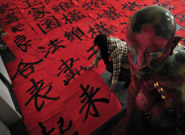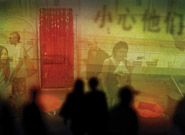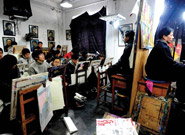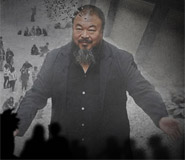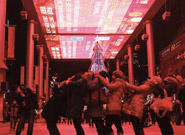A LOOK BACK AT 2010
| February 14, 2011 | Post In LEAP 7
A YEAR OF INTERVENTIONS
As New Yorker correspondent Evan Osnos recently wrote, struggles over demolition have become “the national psychodrama, the defining battle over power and fairness.” Today, questions of land come to the fore in urban development plans, government revenues, and in the inclusion of real estate in GDP figures. Sun Dongdong weighs in on how communities of artists in China voiced their concerns in 2010 as the prospects of demolition loomed large.
SOME THINGS AN ARTIST CAN DO
This past year has seen the consolidation of a number of strategies for adapting to the at times paradoxical but always parallel challenges of survival and production. While an earlier generation of artists have managed to put this delicately balanced system to work on their behalf, inverting relationships that can be torturous for less experienced artists, their younger colleagues, significantly more open to alternative strategies from the outset, have taken to accepting the necessity of the gallery model while speaking realistically about how it actually affects their work.
ACADEMIES AS MONSTERS?
If universities are repositories of knowledge and creativity, then art schools have already functionally deteriorated into repositories of selective memory. Rather than representing the reality of contemporary art, they canonize based on their own partial criteria. Compared to the 1980s, our schools are no longer an important player in the creation of new art; now, they lack both standards and a stable grounding in reality. They produce value judgments closely linked to their own sense of authority, and focus on their own selections, but do not reflect on the origins of their values or their relationship with society.
THE RISE OF CHINA’S FIRST ART STAR
The reasons for his extraordinary popularity are obvious. You can read about them in newspapers around the world, or watch one of the copious films that have been or will be released on him in the coming months. Suffice it to say that in the eyes of the global media, and those of a smaller group of acolytes inside China, the old Li Xianting maxim holds that “the important thing is not the art.”
MICROBLOGS, MEGA AUDIENCES
For galleries, microblogging has become a direct platform for publicity. It is also a boon to non-profit public art institutions, which benefit from this kind of free tool for dissemination. As for art practitioners and theorists, including curators, critics, art historians, and so on, the significance of microblogging is more complex. There is a sharp contradiction between the deep concentration required of art professionals and the hasty, breathless pace of microblogging.

